Stren Series preview: Western Division
Wild West likely to live up to big-bass reputation in 2007
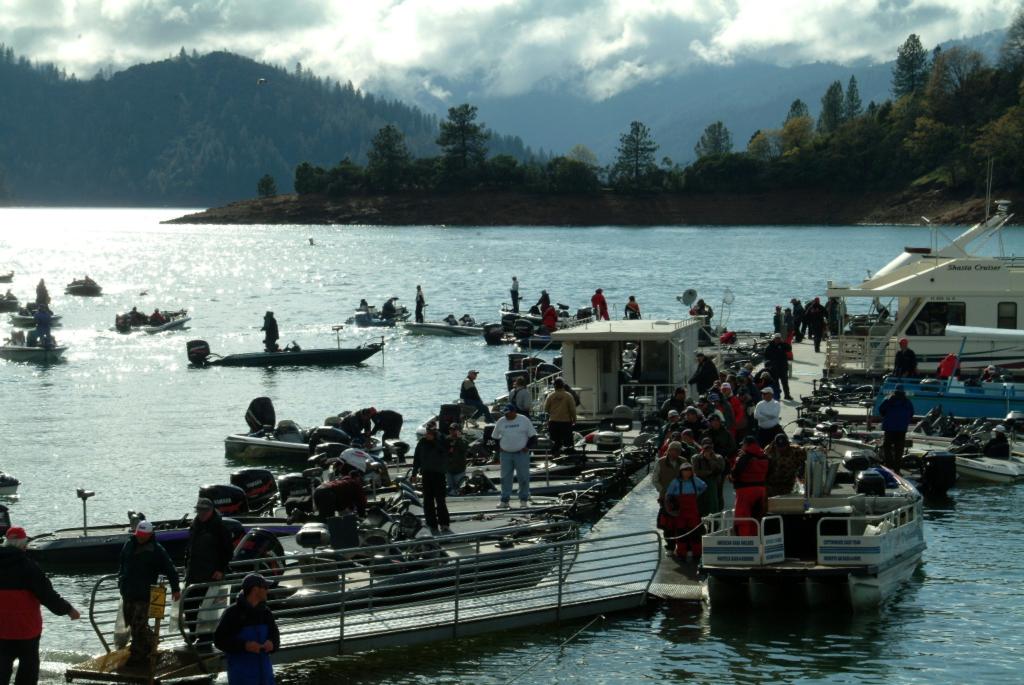
Although the 2007 Stren Series Western Division schedule may at first glance look awfully similar to the 2006 slate of events, the season actually promises to have a very different look and feel to it. Three of the ’06 destinations are on tap for ’07, but nearly all of them are taking place at different points in the season, putting some of last year’s prespawn tournaments in the thick of the spawn and vice versa.
One thing that will not change, however, is the size and number of bass that will certainly be caught in the Western Division this season. One to watch in particular is Clear Lake, the site that 2006 Western Division Angler of the Year Jimmy Reese says holds the best potential for record-smashing bass.
Back on the schedule this season is Lake Mead, last visited by the Stren Series in 2005. Local pro Dennis Kolender expects low water but solid fishing when the pros hit Nevada.
The California Delta is also shaping up to be a slam-dunk tournament, as well-known Delta stalwart Steve Sapp is calling for bass that match the Delta’s enormous proportions. But kicking the season off is another destination from last year, Lake Shasta, where the swimbaits will once again rule the day.
Lake Shasta
Redding, Calif.
Jan. 10-13
The Stren Series Western season will kick off with a spotted-bass extravaganza on enormous Lake Shasta, where a young angler named Mark Meddock led the field last year with a tackle box full of swimbaits. The runner-up of last year’s event, Jeff Michels of nearby Lakehead, says if weather conditions are just so, swimbaits will once again dominate at Lake Shasta.
“Swimbaits are going to have a huge role,” Michels said. “If the weather is right, the swimbait fishermen will win.”
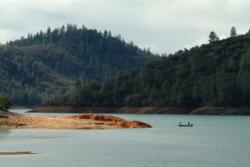 The weather the swimbait fishermen are looking for, said Michels, is rain and wind. But if the weather’s calmer, a different approach should do the trick.
The weather the swimbait fishermen are looking for, said Michels, is rain and wind. But if the weather’s calmer, a different approach should do the trick.
“They’ll be biting on just about all baits,” Michels said of Shasta bass. “If the weather’s calmer, it levels the field out a bunch, so the people throwing dartheads and drop-shot baits will do well.”
Unlike last year, when Shasta’s spots were up and ready to spawn, Michels reports a more spread-out bass population heading into this year’s event. He expects to find bass from the surface all the way down to 60 feet. With the Stren Series visiting Shasta more than two months earlier than in 2006, competitors will find the spawn a long way off. Still, the fishing should be excellent.
“Right now, it’s wide open,” Michels said. “I expect anywhere from 12 pounds a day to do well if it’s clear and (not) windy. If it’s storming and windy, you can expect 20 pounds a day.”
Michels said a typical Shasta spotted bass weighs in the 5- to 6-pound range, with 8-pound spots not uncommon. While the vast majority of Shasta bass are spots, he says the occasional largemouth can be found, and when the rare bucketmouth makes an appearance, it’s usually a trophy.
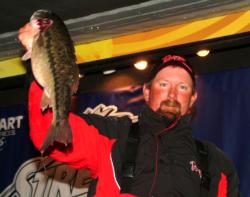 Michels also noted that the spots like to suspend on deep rock walls, and anglers will have a long way to go to find those areas on their GPS – Shasta has more than 360 miles of shoreline to fish.
Michels also noted that the spots like to suspend on deep rock walls, and anglers will have a long way to go to find those areas on their GPS – Shasta has more than 360 miles of shoreline to fish.
“Shasta’s a big, big lake,” Michels said. “You can hide 200 boats on Shasta real easy.”
Weather permitting, Michels says it could take as much as 50 pounds over four days to win the event.
“It can be as low as 40 pounds or as high as 70 pounds,” Michels said of the winning weight. “It’s all really, really weather-dependent.”
Lake Mead
Las Vegas, Nev.
Feb. 21-24
Vegas may be known for its high rollin’, but Lake Mead is going to be noted for its low water when the Stren Series hits the desert fishery in late February. Competitors who fished the previous Stren Series Lake Mead event will notice the absence of grass and bushes that were there in 2005, but according to local stick Dennis Kolender, the fishing on a drier Lake Mead is still pretty solid.
“Late February can be really good with an excellent jig bite,” said Kolender, who finished third on Lake Mead in 2005. “The water starts warming up in the waterways and creeks, and that time of year a lot 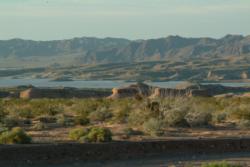 of smallmouths are starting to move up and spawn. February is one of the best months, I think, for smallies.”
of smallmouths are starting to move up and spawn. February is one of the best months, I think, for smallies.”
That fact is significant because Lake Mead is primarily stocked with largemouths. The bass are Northern-strain, and thus the largemouths don’t get California huge.
“Normally Lake Mead doesn’t have smallmouths, but they’ve been coming around the last three years,” Kolender said. “Before, we’d catch two or three in tournaments, and now guys are catching limits of them.”
As for Kolender, he says he’ll be targeting shallow fish come tournament time, though Lake Mead offers bass at a variety of depths. He says typical presentations include jigs, spinnerbaits, Texas-rigged worms and drop-shots, though a topwater will be tough to beat in shallow water.
“You can catch fish in 3 to 4 feet of water or 15 to 20 feet,” Kolender said. “You could be in one part of the lake and fish in 55 feet of water, but normally I fish shallow.”
Like any fishing tournament, the weather will be a factor on Lake Mead, with Kolender hoping snow runoff from the mountains will help raise the water levels. He cited the loss of at least one marina due to low water. Day in, day out, Kolender said, competitors can expect highs in the mid-60s with lows in 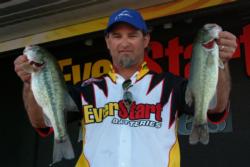 the 50s, perfect for a prespawn pattern.
the 50s, perfect for a prespawn pattern.
“It’s the beginning of the spring, and they’re fixing to start moving up,” he said. “Guys are going to have to work a little slower, though it depends on what part of the lake they’re fishing. Usually on any of the desert lakes, 10 pounds a day is pretty good for winning a tournament.”
Also handy on Lake Mead is a good GPS, as the lake can be up to 70 miles long when it’s full, running from Las Vegas all the way to the Grand Canyon. Current water levels have kept the lake to about a 50-mile spread, but with the weather conditions meaning winter, prespawn and spawning patterns, marking waypoints will be key.
“One thing that helps on Lake Mead is the Lowrance GPS,” Kolender said. “When I prefish, I can plug in so many waypoints.”
Indeed, with Kolender’s belief that finding where the big fish live is the key to success on Lake Mead, every little bit helps.
Clear Lake
Kelseyville, Calif.
April 25-28
The Stren Series is visiting Clear Lake almost two months later than it did in 2006, and according to Western dominator Jimmy Reese, the results will be nothing short of phenomenal.
“Toward the end of April is probably some of the most fun fishing on the lake,” Reese said. “A lot of big fish move up, so I imagine that you’re going to see quite a few 7- to 10-pound fish. There will probably be 30 to 40 fish caught in that neighborhood, maybe more. It all depends on good ol’ Mother Nature.”
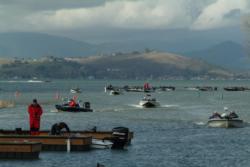 Reese won the Clear Lake event last year en route to his Western Division Angler of the Year title, and Mother Nature walloped anglers in ’06, delivering cold wind, rain and even snow. But that was in late February into early March, and this time around, conditions should be much more accommodating.
Reese won the Clear Lake event last year en route to his Western Division Angler of the Year title, and Mother Nature walloped anglers in ’06, delivering cold wind, rain and even snow. But that was in late February into early March, and this time around, conditions should be much more accommodating.
“It’s going to change the bite,” Reese said of this year’s late-April time frame. “It should be an all-out spawn bite, and the spawn should be pretty good this year.”
So good, in fact, that Reese went so far as to predict it will take a hundred-pound weight or more to win.
“I wish I could say the records could be in jeopardy, but that’s saying a lot right now because the weather is the biggest factor,” he said. “If we hit it right, it could be really fun.”
Indeed, last year’s late spring resulted in the crummy conditions at tournament time, as Reese said winter didn’t make its final goodbyes in the area until late April. But under normal conditions, temperatures in late April should be in the 70s.
Reese said a smorgasbord of baits can be used effectively to catch Clear Lake’s abundant largemouth population – he listed worms, jigs, spinnerbaits, jerkbaits, swimbaits and lipless crankbaits, just to name a few. Reese said his personal preference is the Water Striker Wild Vibe, a bait of his own design.
One method of catching fish that was popular in the past on Clear Lake – sight-fishing – has all but been eliminated due to changing natural conditions.
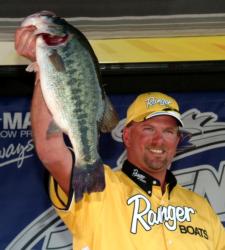 “The water clarity has to do with how much rain we’ve had as well as the shad population,” Reese said. “There’s a bazillion shad in the lake right now, and they’re teeming up the water. We haven’t been able to get a good sight-fishing bite the last couple of years because of the shad coming back.”
“The water clarity has to do with how much rain we’ve had as well as the shad population,” Reese said. “There’s a bazillion shad in the lake right now, and they’re teeming up the water. We haven’t been able to get a good sight-fishing bite the last couple of years because of the shad coming back.”
In addition to lots of potential baits, there is also an abundance of potential strategies, as Reese said Clear Lake offers excellent structure fishing and shallow-water fishing.
“It’s all got to do with fishing pressure and who finds the area that doesn’t have a lot of pressure,” he said. “There are 50 areas on the lake where you could win the tournament, and it’s going to come down to fishing pressure.”
The variety comes down to the fact that Clear Lake essentially fishes like two lakes, with one area appealing to shallow-water anglers and the other end a typical hangout for those who prefer deeper water. Both areas, Reese said, are rife with bass.
“One end fishes deep, and when I say deep, it’s 5 feet to 25 to 30 feet, with a lot of rocks,” he said. “The north end averages a depth of 5 to 8 feet, so whatever you like to do, you can choose which way you want to go. If you like throwing shallow crankbaits and ripbaits, the north end is usually better. If you like rock piles with worms and jigs, the south end is better. It can be won either way – it’s a very unique lake.”
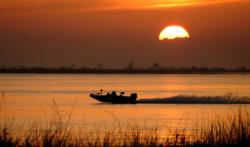 California Delta
California Delta
Oakley, Calif.
May 16-19
Though the 2007 Cal Delta event takes place at roughly the same time as last year’s tournament, local hotshot Steve Sapp says weather conditions now – early January – are already having a positive effect on tournament conditions that will make the fishing even hotter than it was in ’06.
“I think you’re going to see a lot bigger weights this year just due to weather factors out here right now,” said Sapp, whose four FLW Outdoors top-10 finishes have all come on the Delta, including third last year at the Stren. “Most of the fish are going to be past the spawn, and they’re going to be a lot more aggressive on the postspawn.”
Last year, Sapp says, the Stren Series caught the Delta bass in that finicky in-between phase, when some fish were still spawning and some had just started the postspawn. But the Delta’s January warm-up should put the mid-May tournament firmly in postspawn territory, meaning a better bite and better weights for all.
“The fish are going to spawn early this year, in March and April,” Sapp predicted. “We’re going to have a beautiful topwater bite when the Stren shows up.”
Sapp said one of the best things about the Delta this year is that it should not be dominated by locals – the conditions should be prime enough to where anyone can come in and catch fish.
“I look for there to be a frog bite, a buzzbait bite and a Spook bite, and it’s going to be a tremendous bite,” Sapp said. “It’s going to be the kind of bite where the average guy showing up, not knowing the Delta, is going to be able to catch fish. It’s a disadvantage when they come out here and the fish are in transition, because the local guys have an advantage. Now we’re going to be past the local part, and 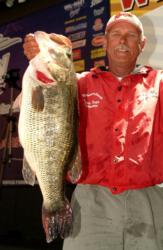 they’re going to go out on that great Delta and catch fish. If a guy doesn’t bring in a good limit, he should quit fishing.”
they’re going to go out on that great Delta and catch fish. If a guy doesn’t bring in a good limit, he should quit fishing.”
Sapp is only half-kidding – if his weather predictions hold true, he expects to see four-day 80-pound tallies or more. He also expects the competition to be neck and neck by the time the final day rolls around.
“I really feel it’s going to be a close tournament,” he said. “There are probably going to be 20 to 30 guys who are in the hunt. To make the cut (after three days), they’d better be looking at 55-plus (pounds). After 32 years here, I’m looking forward to it. It’s going to be whoever catches that 10- to 12-pounder on the last day.”
The reason, Sapp says, for the Delta’s hefty weights is that the Florida-strain bass that were stocked in the late 1980s have genetically eliminated the smaller Northern-strain bass. What remains is a lake full of bass that individually weigh in the double digits – or close to that.
“I’ve been here when a 3-pounder was a good fish,” Sapp said. “Now, when you catch a 3-pounder, you go, `Gee, I’m in trouble.'”
Sapp said the tournament will be won shallow, and though he personally favors topwaters, he expects to see some of the young guns going with the swimbait, which has emerged as the go-to bait out West.
“It’s going to be won in 4 feet of water or less, and that time of year, they relate to corners and moss beds,” he said.
And just as Sapp predicts the tournament results will be close, he also expects it to be won close – close to the launch ramp, that is.
“There are 1,100 miles of waterways to fish, but because that area in the middle part of the Delta produces such quality fish that time of year, I think the tournament will be won within 10 miles of the launch ramp,” Sapp said. “If you could come out here and ride in a boat, within 10 minutes of leaving the launch ramp, you’d go, `This is amazing.’ It’s a great place to fish.”